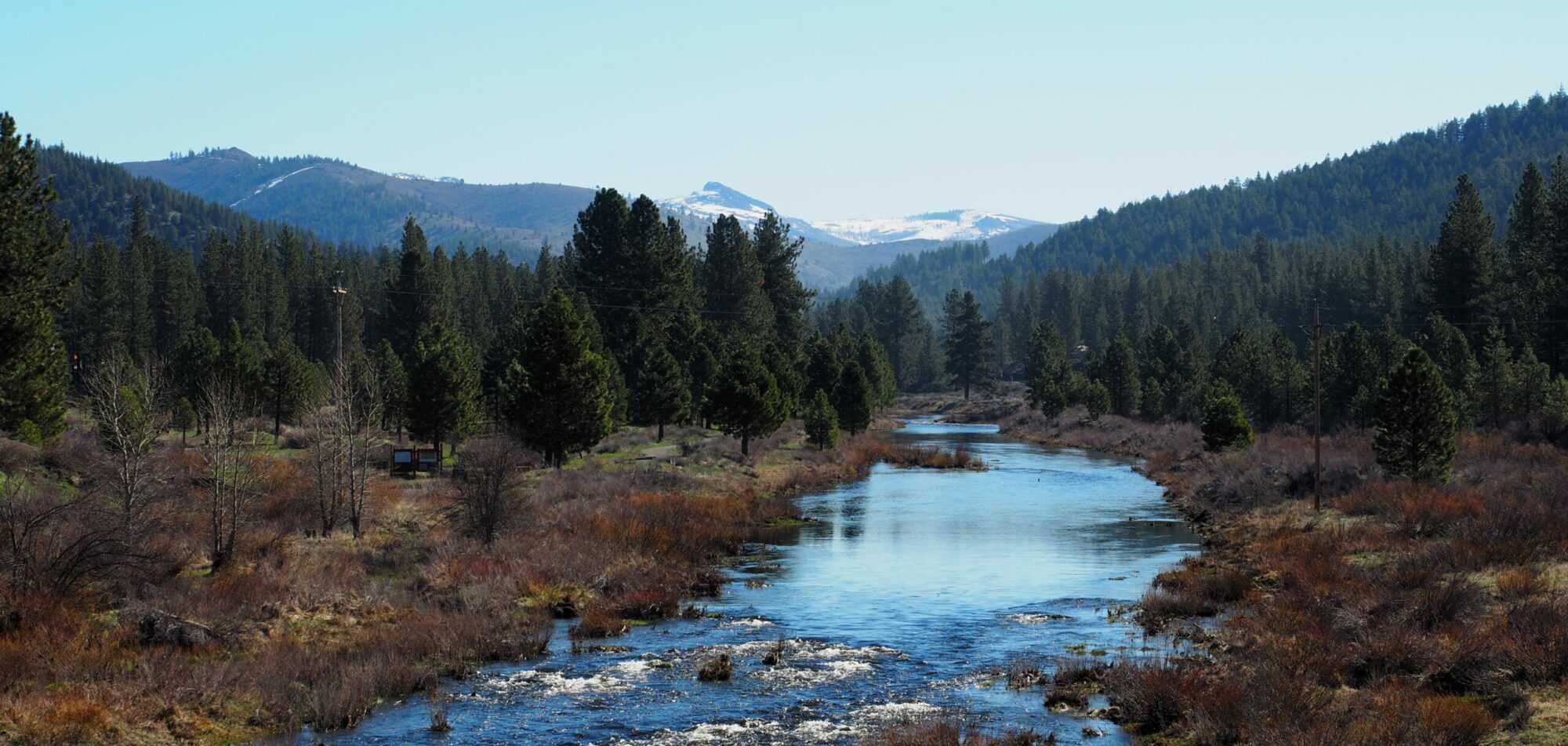Due to Climate Emergency, Essential US Forest Service Management Activities to be Carried out Monday
 MEDIA ALERT: Climate and Fire Safety-Risking 275,000+ Acre “Community Destruction Project”— Largest Ever Logging Plan in Plumas National Forest Generating Increasing Resistance; Intervention Planned at US Forest Service Office in Quincy, CA Monday Morning
MEDIA ALERT: Climate and Fire Safety-Risking 275,000+ Acre “Community Destruction Project”— Largest Ever Logging Plan in Plumas National Forest Generating Increasing Resistance; Intervention Planned at US Forest Service Office in Quincy, CA Monday MorningQUINCY, CA—The U.S. Forest Service’s $650 Million “Community Protection Project,” the most extreme logging plan in Plumas National Forest history, has been presented as a response to the climate-driven Dixie Fire, yet would emit 6 million tons of CO2 and spray $30 million of herbicides to convert wild forest habitat to tree plantations that are more fire prone.
The fact that not one cent of the $650m of taxpayer money would pay for structure hardening, evacuation planning, or defensible space around structures has riled a growing number of local residents who say the plan is waste of public money and would only put communities at greater risk from faster moving wildfires in the future by causing greater evaporation and wind speeds through the damaged forest canopy.
The Plumas National Forest Central and West Slope Project involves logging and $30 million of herbicide spraying over 275,000 acres of the Plumas National Forest in the Beckwourth, Feather River, and Mt. Hough Ranger Districts in Plumas, Yuba, and Butte and Sierra Counties. Despite recent high intensity fires being linked to the climate crisis, the Forest Service is planning to add to the problem by doubling down on logging and fire suppression that have caused the current crisis. The USFS estimates nearly 6 million tons of carbon dioxide would be released over a ten year period [1], yet claim without evidence that “these emissions would likely be offset.”
In January, Secretary of Agriculture Tom Vilsack invoked a controversial “emergency action” authorization, as laid out under Section 40807 of the Infrastructure Investment and Jobs Act of 2021, targeting up to 45 million acres of National Forests across the western U.S. [4] This so-called emergency logging “shall not be subject to objection under the predecisional administrative review process,” a legal challenge used by environmental advocates to pause or stop destructive projects. [5]
This unprecedented scale of logging is inconsistent with President Biden’s executive order to protect old growth forests. It would release an estimated 4 gigatons of carbon dioxide (90 tons of CO2 released per acre), the equivalent of 635 coal plants and greater than the entire U.S. emissions goal of 3.3 gigatons for 2030. [6]
According to Josh Schlossberg of the Eco-Integrity Alliance, one of the groups opposed to the plan, “Despite one-sided and often inaccurate media coverage, industry/agency claims of ‘overgrown’ forests, ‘unusual’ high-severity wildfire, and the efficacy of ‘wildfire risk reduction’ logging have been debunked by countless studies in peer-reviewed journals from independent scientists.”
Indeed, these studies (not funded by agencies with conflicts of interest proven to intentionally exclude scientific data) conclude that western forests prior to fire suppression did grow densely, did experience high-severity wildfire, and that not only won’t logging stop large wildfires, it can make them burn hotter and spread faster by opening forests to sunlight and wind. [7][8]
Yet, contrary to this science, “wildfire risk reduction” logging—which includes clearcutting mature and old-growth trees—is being justified as an “emergency” to supposedly address “threats to natural resources” and “hazards threatening human health and safety.” The scientific consensus is that hardening homes—measures such as installing metal roofs and maintaining defensible space up to 100 feet around structures—are the only thing that actually prevents structure losses in a wildfire. Research has shown that nothing done beyond 100 feet makes any difference to the survivability of homes. [9]
“The central cause of recent high intensity wildfires is the worsening climate crisis [10], caused by deforestation, which the Forest Service now wants to ramp up,” says Josh Hart with Portola, CA-based Feather River Action!. “Their plan would devastate biodiversity, increase carbon emissions, damage crucial carbon sinks, and turn forests into dried out tree plantations, making extreme wildfires like the Dixie more—not less threatening to communities. We demand the USFS halt this dangerous and destructive project immediately.”
Event details: Monday November 13th 8:30am, US Forest Service HQ 159 Lawrence St. Quincy CA Visuals include local residents holding signs, ‘carrying out necessary safety and health-related “Forest Service management,” bullhorns and plenty of local forest policy controversy..
[1] https://www.fs.usda.gov/project/plumas/?project=62873
[2] https://www.fs.usda.gov/project/?project=61355
[3] https://usfs-public.app.box.com/v/PinyonPublic/file/1201186672813
[4]
https://www.congress.gov/118/meeting/house/115437/witnesses/HHRG-118-AP06-Wstate-MooreR-20230323.pdf
[5] https://www.congress.gov/117/plaws/publ58/PLAW-117publ58.pdf
[6] https://irp.cdn-website.com/0358d1eb/files/uploaded/Version-2.0-JMP-ReportRFS.pdf
[7] https://www.mdpi.com/2571-6255/6/4/146
[8] https://botanicgardens.uw.edu/wp-content/uploads/sites/7/2022/03/Prichard_etal_2021_10CommonQuestions.pdf
Spokesperson
Feather River Action!

USFS: Failing the Forest and Failing All of Us
![]() The Forest Service is failing the forest, failing communities and failing the planet’s climate. FRA! not only questions USFS policies, we are actively questioning the (false) underlying assumptions that inform USFS management decisions. We recently submitted comments on the Eastside portion of the USFS Community Destruction Project, in which we enumerated USFS many failures:
The Forest Service is failing the forest, failing communities and failing the planet’s climate. FRA! not only questions USFS policies, we are actively questioning the (false) underlying assumptions that inform USFS management decisions. We recently submitted comments on the Eastside portion of the USFS Community Destruction Project, in which we enumerated USFS many failures:
— a failure to acknowledge growing evidence of cooperation among forest community members including trees, plants, animals, fungi and insects. There is competition for sure, but there is also cooperation and this is nearly totally denied by the USFS.
— a failure to acknowledge and properly assess the many factors that contribute to wildfire behavior including (most glaringly) moisture levels, rate of drying, and wind speeds. A singleminded focus on fuels is not only incomplete, it is putting communities at risk by failing to consider and analyze all relevant factors
— a failure to acknowledge the crucial ecological role that mixed intensity (including high intensity) wildfires play including rejuvenation of soils, creation of snag habitat critical for northern spotted owl, black backed woodpecker, and many other species. While blackened and burned forest may appear “destroyed” — the reality is that forests recover rapidly from fire, often returning more vigorous than they were before the fire. What really hurts post-fire landscapes is salvage logging.
— a failure to acknowledge or even consider the evidence that suggests that nothing done outside 100 ft. from structures has any impact whatsoever on structure survival. When asked about how much of each project would be carried out in this critical defensible space zone, Forest Fuels and Prescribed Fire Program Manager Ryan Bauer replied that, “That information was not part of our analysis.” This omission shows that “community protection” is simply a marketing label and not a bona fide goal of the Forest Service.
— a failure to adequately consult the public on projects that directly interface with local communities. Rather than curtail opportunities for public involvement (eg. failing to hold even one Q&A/ public meeting despite multiple requests, eliminating or cutting short the objection process, declining to meet with stakeholders in the field, etc, due to this project’s unprecedented size, proximity to communities, and high stakes of land management on wildfire threats to communities, the USFS should have properly expanded public consultation opportunities. The decision to essentially cut the public out of decisions that dramatically impact public land will only generate ill will toward your agency and pour fuel on the fire of those who are calling for the USFS to be removed from its land management responsibilities.
— a failure to consider and properly incorporate any science that calls into question the current priority of resource extraction on public lands, even going as far as to call such evidence “misinformation.” There exists an “intellectual inbreeding” among forestry academics, USFS employees and consultants, and some local non- profits and an “echo chamber” of outdated pseudo-science that is putting our climate, forests and communities at risk.
— a failure to consider the laughable and quite ridiculous notion that the forest, which has evolved and survived over millions of years including volcanic eruptions, asteroid and comet impacts, dramatic climate changes even more severe than the human- caused one underway, requires humans, mechanical equipment and herbicides to help it thrive when every shred of evidence indicates that natural regeneration and recovery is more than ample to return habitats to the condition they were in before the introduction of interventions that damaged them and that they would now have us believe will also “restore” them.
— a failure to consider natural succession in ecological habitats, a rigid view of nature as a static force that is incapable of adaptation, lacking intelligence.
— a failure to present accurate and complete existing conditions, either through descriptions or photographs, regarding habitat quality, biodiversity etc. so as to provide a baseline to the public and officials that would inform what is appropriate in a particular area.
— a failure to present any information at all about non-threatened, non- endangered species. This absence, combined with an obsessive (compulsive?) focus on timber extraction, leads the public to believe that the USFS does not truly care about habitat quality, or other factors impacting ALL residents of the forest which are just as important and should be offered the same respect as human residents of the forest.
— a failure to make informed and intelligent decisions about land management in light of:
— the consistent struggle to survive “forest thinning” projects by dense forest dwellers, whose habitat is dwindling because of projects like these.
— the rapidly intensifying climate emergency: making decisions that undermine forest resilience and survival of drought conditions.
— the growing recognition of the inappropriateness and arrogance of industrialized “forest engineering” projects, inflicting a heavy handed mechanical and chemical approach onto delicate forest ecosystems.
— the ongoing and worsening extinction crisis and collapse of wild food chains, caused by logging and disruption of forest ecology.
— a failure to be honest about true agency motivations: wouldn’t it be refreshing if the USFS presented a new project and said, “yes we want to log in sensitive habitats and this will cause harm to the forest, but this is why we believe it is justified”, rather than coming up with some mealy-mouthed, deceptive purposes like oh we want to “restore the forest” or “preserve the aspens” or “protect communities.” How stupid do they think we are?
USFS: This is not your forest. This is not your land. This is not your money to do with as you wish, neglecting public input. Cease and desist your destructive activities that put local communities at risk. Re-allocate the money to go to community hardening now, or have blood on your hands when the next wildfire burns through dried out forests and destroys lives and property.
We pledge to take personal action, and encourage others to also take personal action to stop the Community Destruction Project in Plumas National Forest.
Check out FRA! complete comments on the “Community Destruction Project– Eastside” submitted Nov. 6th, 2023
